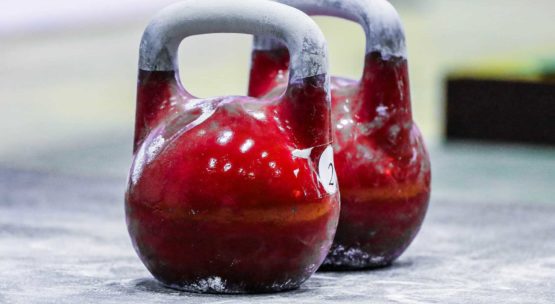
4 Strength Techniques that Would Benefit a Kickboxer’s Training
Training Offered
- Join Today
- Our Personal Trainers
- Face To Face Personal Training Leeds
- Your First Session
- Online Training Leeds
- Remote Personal Training Leeds
- Ladies Kickboxing Leeds
- Under 18S Fitness Leeds
- School Programmes
- Corporate Team Events
- Gym Space Hire Leeds
- Treatment & Therapy Hire
- Gym Access
- Covid-19 Rehabilitation
- Low Back Pain Treatment
- Boot Camps Leeds
- Food Intake & Nutrition
- Kickboxing Classes Leeds
- Personal Training Leeds Faqs
15
Aug
4 Strength Techniques that Would Benefit a Kickboxer’s Training
By: Elemental Fitness Ltd kickboxing , strength, bruce lee, plyometrics, speed

Updated 2022
4 Strength Techniques that Would Benefit a Kickboxer’s Training
Kickboxers need power, speed, and strength during fights. Having a combination of these helps to improve technique and performance. That is why weight training and body weight exercises can prove to be very useful in the long term. To increase kicking and punching power they must focus on building strength through bodyweight and weight training alongside pad/bag work. In turn, this will also increase endurance levels to last through intense bouts. A kickboxer’s focus when training is on building core strength and strong legs.
Bruce Lee
“Above all, never cheat on any exercise; use the amount of weight that you can handle without undue strain.” – Bruce Lee (Khedun, 2013).
Bruce Lee was a very disciplined martial artist, instructor, and actor. He was a big fan of strength training using weights and incorporated it into his daily workout regime alongside his martial arts training. He regularly performed the clean and press (seen below), a very good strength and conditioning exercise that works the full body. (“Workout,” 2017).
He knew that the extra work and hours he put into his training at the gym would improve his craft in martial arts. However, he also knew that overtraining could regress and affect his martial arts performance. (He injured his back once due to overtraining!). (“Motley Health,” 2018).

His views were sometimes controversial but also very influential. Alongside Jeet Kune Do and Wing Chun he also embraced Western fighting styles. He was a big fan of boxing which influenced his development of Jeet Kune Do. So, if martial arts legends such as Bruce Lee believed in strength training to improve their martial arts skills, who are we to argue?
Plyometric Training
The nature of plyometrics means the body is not in a controlled position, such as a fighter in a ring. Ballistic (fast/explosive) movement helps the kickboxer with power, speed, strength, balance, and body awareness. Jump training means muscles exert maximum force in short intervals and mimic a kickboxer’s movements in a fight. Over time this will increase strength, and power in the glutes, hamstrings, and quadriceps. As it is not as controlled as weight training it naturally improves strength in the anterior and posterior chain increasing balance and stability in the core - needed as many throwing kicks require you to be on one foot. Exercises include:
- Jump Rope
- Step Jumps
- Burpees
- Medicine Ball Slams
Weight training
Ideal for building strength and muscular endurance levels. There are arguments to suggest lifting heavy weight is not good for a kickboxer, especially in the lead-up to a fight as it can increase weight (muscle weighs more than fat). However, if you focus on lower repetitions, sets and weight this will be more beneficial to your strength gains. Andrew Read provides an insight into this method of weight training in his blog. He states that the athlete should keep the reps very low to a maximum of 3 per set. He suggests a total of 10 reps per exercise would benefit an athlete’s performance. This form of training is called neural training. (Reed, 2019).
If reps are more than 8 per set then this would be classed as metabolic training. This is where you are working the muscles to fatigue and hypertrophy happens in muscles that are under tension for long periods. (Reed, 2019). It could be argued that the neural form of strength training is more applicable to kickboxers who are wanting to compete in fights/tournaments; nevertheless, it is important to find that right balance where you are increasing strength through weight training but also not sacrificing your kickboxing form or risking injury. The key to an athlete’s training is adding strength and minimizing body weight.
The recommended and ideal weight strength training program for kickboxers is using medium to heavy weights (around 80% 1RM for well-trained individuals) and low repetitions (3-5 reps) with long periods of rest. (Wilson, 2016). Performing a bench press for example using this method would maximize strength development whilst limiting hypertrophy.
Boxing and kicking involve unilateral movements (the movement of one limb), so imitating these movements when weight training would be very useful to a kickboxer’s technique. Doing single leg raises or leg presses for example would help to alleviate imbalances. If a combination of these weight training techniques is properly managed and maintained, they can be very beneficial to a kickboxer’s form in the long term.
Speed Play
This form of exercise is also known as fartlek training. It is ideal for kickboxers, keeping the mind and body guessing, the fighter can never relax or get too comfortable during a fight. They need to be continually engaged. A kickboxer needs to have quick reactions to be able to react and think quickly. The constant unpredictable movements in a fight, from slow to fast to slow, means the body has to switch from fast twitch to slow twitch muscle fibres.
This is where fartlek training will help you as it mirrors the unpredictability of a fight. It can help improve endurance levels, speed, power and strength. In turn, this improves a fighter’s anaerobic threshold. After all, it is important to have the strength and endurance to last a full fight!
Examples are:
- Prowler Sledge Push with various weights each time
- Pads and bag with a change of power and speed with longer and shorter rounds
- Sprints and Shuttles, usually with some form of an interval of exercises (we always go for the burpee!)
You can be very creative and imaginative with this training method. It engages the athlete physiologically and psychologically. The unpredictability can make it fun and challenging, and the rewards will be evident.
Functional Training
Functional training consists of compound exercises that are close to replicating everyday functional or sport specific movements. For example, a kickboxing is constantly moving, twisting, turning, jumping and squatting. Check out some of these great functional exercises below to compliment your kickboxing training.
- Agility ladders, to help with footwork
- Reflex balls, to help with...well, reflexes
- Old-school line work (a favourite of ours) to help with building technique and precision
- Resistance band/weighted punching, assists with delivering power and accuracy on strikes.
If it resembles a movement pattern and can be designed to take advantage of improving said pattern, it's functional.
There is no one method
To conclude, there are many benefits to introducing different strength training methods to your program as a kickboxer. A combination of these strength training methods gives you more energy and increases endurance levels as you are working aerobically and anaerobically (without oxygen) as the intensity increases. Over time this will improve your anaerobic threshold (the point when the aerobic system can no longer keep up with the body’s energy demand) and thus helping you to work longer and harder. The improvement in endurance due to strength training is ideal for long intense fights/training, that little bit of extra energy can prove all the difference.
Successfully finding the right balance of high weight accompanied with low reps and sets, you will reap the rewards in strength gains. And remember, Bruce Lee believed that training with weight improved his overall strength, performance and ability in his martial art!

Our Programs
Check out our different routines available online to start you on the path to becoming a pro kickboxer. Starting from only £9.99.
References
Reed, A. (2019). 3-Day Strength Program For Kickboxers, MMA Fighters, And Grapplers [Blog post]. Retrieved from https://breakingmuscle.com/fitness/3-day-strength-program-for-kickboxers-mma-fighters-and-grapplers
Wilson, M. (2016). Boxing Tips Strength Training Techniques & Workout Design [Blog post]. Retrieved from https://www.myprotein.com/thezone/training/boxing-tips-strength-training-techniques-workout/
Khedun, R. (2013). Profile of Bruce Lee. [online] Kung Fu Kingdom. Available at: https://kungfukingdom.com/profile-of-bruce-lee/ [Accessed 23 July 2019].
Workout Like Bruce Lee, (2017). Bruce Lee Body Training Routine For Strength, Power & Muscle Definition. [online] Available at: http://www.workoutlikebrucelee.com/bruce-lee-body-strength-workout/ [Accessed 23 July 2019].
Motley Health No Nonsense Fitness, (2018). The Bruce Lee Workout Page – Fitness and Strength Training. [online] Available at: https://www.motleyhealth.com/fitness/bruce-lee-workout [Accessed 23 July 2019].


